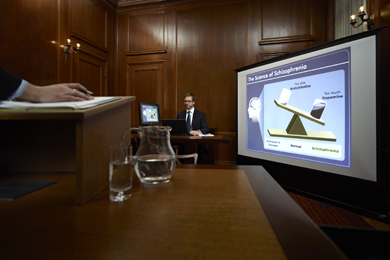Trial Presentation Top-Tier Solutions for Legal Presentations
Trial Presentation Top-Tier Solutions for Legal Presentations
Blog Article
Captivate the Jury: Necessary Elements of a Powerful Test Discussion
Crucial elements such as comprehending the audience, crafting a compelling story, and grasping spoken and non-verbal interaction are crucial components of an effective presentation. As these elements link, they create a natural approach that not only notifies but also engages jurors on multiple degrees.

Recognizing Your Target Market
Understanding your target market is an essential aspect of efficient trial presentation. A successful discussion hinges on the ability to grasp the demographics, values, and tendencies of jurors. This understanding notifies just how debates are mounted, proof is offered, and emotional charms are crafted, ensuring that the message resonates with the jurors on a personal degree.
Research suggests that jurors come from diverse histories and may have differing degrees of understanding concerning lawful procedures. Furthermore, recognizing the jurors' possible prejudices and life experiences enables the trial speaker to prepare for arguments and address issues proactively.
Efficient trial presentation additionally entails observing jurors' responses throughout the procedures. Being attuned to non-verbal hints can give insight right into their interaction and receptiveness, enabling real-time modifications in technique. Eventually, a profound understanding of the audience not just boosts communication but additionally develops relationship, increasing the probability of a beneficial outcome. Involving with jurors as individuals as opposed to a collective unit is necessary in cultivating a solid link in the court room.

Crafting a Compelling Story
Crafting a compelling story is necessary in guiding jurors through the intricacies of a situation. A well-structured narrative not only streamlines complex legal ideas but also engages jurors on an emotional level, making the details much more relatable and unforgettable.
This message must resonate with the jurors' worths and experiences, promoting a connection that transcends plain facts. This sequential strategy can assist jurors follow the development of occasions, highlighting cause and result.
Including human aspects-- such as individual tales or anecdotes-- can better improve the narrative's influence. These aspects stimulate empathy, permitting jurors to visualize the repercussions of the case on the real worlds. In addition, using a regular motif throughout the presentation reinforces the major debate, making it much easier for jurors to retain crucial points.
Inevitably, a compelling narrative changes a test discussion from a plain recitation of realities right into a convincing story that mesmerizes the jury, encouraging them to deliberate with both factor and emotion.
Utilizing Aesthetic Help
Incorporating visual aids into a trial presentation can significantly boost jurors' understanding and retention of info. Visual materials such as graphes, layouts, photographs, and videos can transform complex lawful principles and evidence into conveniently absorbable layouts. By engaging several senses, these help enable jurors to envision the case's vital aspects, making it much easier for them to follow along and comprehend detailed details.
In addition, well-designed aesthetic help can stress crucial points and emphasize partnerships between different items of proof. As an example, timelines can successfully illustrate the series of occasions, while annotated pictures can clear up certain details relevant to the instance. This not just aids in understanding yet also strengthens the story provided by the attorney.
It is essential, nonetheless, to guarantee that visual help are appropriate, clear, and expertly provided. Extremely intricate or cluttered visuals may overwhelm jurors and take away from the message. When used sensibly, visual help offer to enhance the oral arguments and enhance the general effect of the test discussion. Eventually, effective aesthetic interaction can be a powerful device in encouraging jurors and assisting them get to informed verdicts.
Grasping Verbal Interaction
Efficient verbal interaction is critical in a test discussion, as it acts as the key ways where attorneys communicate their disagreements and get in touch with jurors. Mastering this ability entails quality, persuasion, and interaction. Attorneys must verbalize their factors plainly and briefly, staying clear of legal jargon that may confuse jurors. Simplicity in language cultivates understanding and aids jurors understand complex browse around this site concerns offered during the test.
Furthermore, tone and pacing dramatically impact just how messages are received. A certain tone conveys authority, while ideal pacing allows jurors to soak up info without really feeling bewildered. Attorneys ought to also differ their vocal inflections to highlight bottom lines and keep jurors' rate of interest throughout the discussion.
Additionally, the organization of spoken debates is vital. Structuring the narrative logically and coherently assists jurors follow the attorney's logic, making it simpler for them to keep vital details. Making use of influential methods, such as storytelling, can likewise boost the psychological click this link resonance of the arguments presented, therefore developing an extra extensive connection with jurors.
Eventually, mastering verbal interaction not just enhances a lawyer's situation yet also fosters depend on and connection with the jury, considerably boosting the opportunities of a desirable judgment.

Engaging With Body Movement
Nonverbal interaction plays a crucial function in trial presentations, often communicating messages that words alone can not share. Body movement, encompassing motions, posture, faces, and eye contact, considerably affects exactly how jurors perceive the integrity and genuineness of the presenter. A positive stance, with shoulders back and an open posture, can infuse trust, while closed-off body movement might suggest defensiveness or unpredictability.

Faces ought to show the feelings associated with the instance, enhancing the narrative being offered. For example, a sincere expression throughout a touching moment can elicit empathy and strengthen the sob story. Eventually, understanding body language is crucial for effective trial presentations, as it improves verbal interaction and develops a compelling presence that reverberates with the court.
Final Thought
Finally, astounding the court requires a critical strategy that includes recognizing the audience, crafting an engaging narrative, utilizing visual aids, understanding spoken interaction, and engaging via body movement. hop over to here Each element plays an important role in producing an effective test presentation that reverberates with jurors on both psychological and intellectual degrees (trial presentation). By integrating these elements efficiently, lawful experts can significantly boost their capability to persuade and affect jury decision-making
Report this page